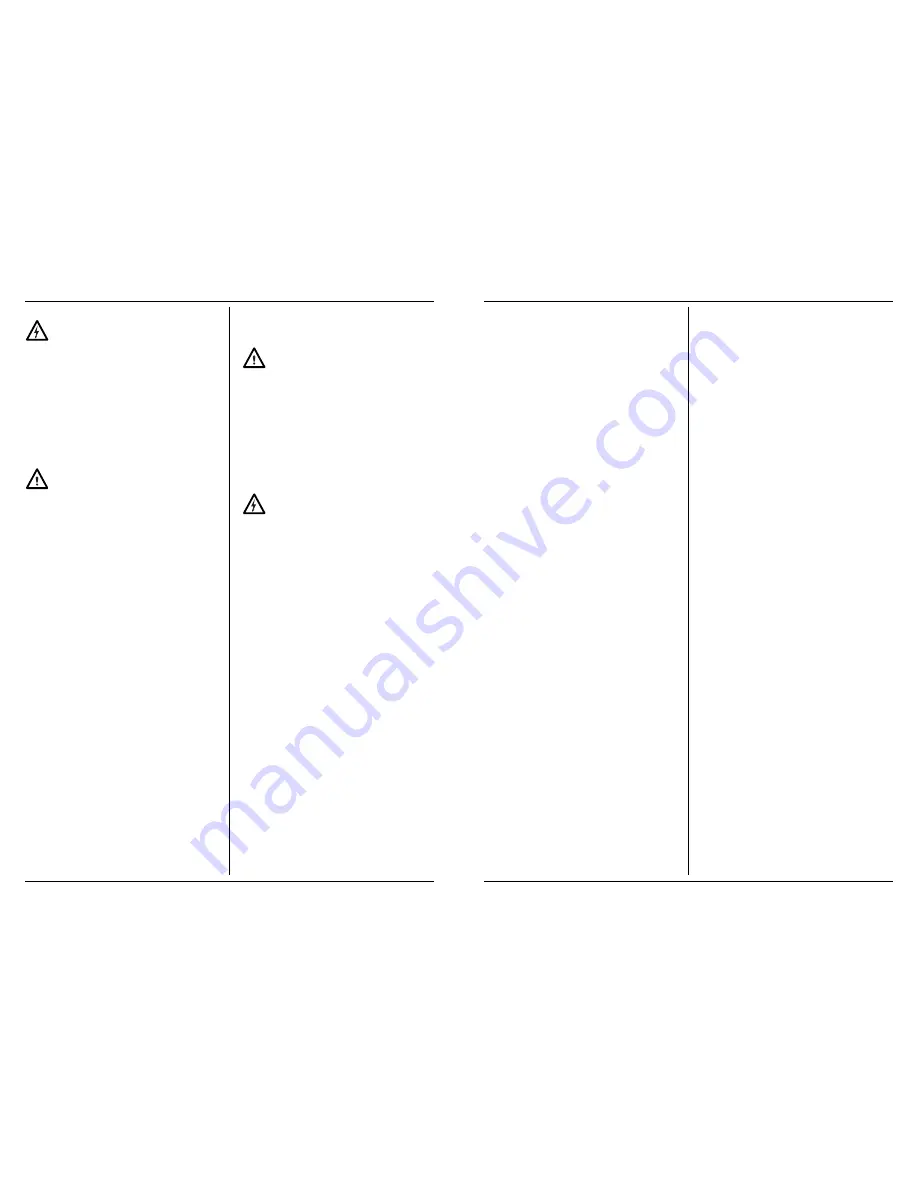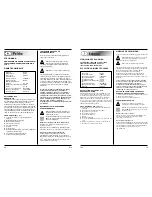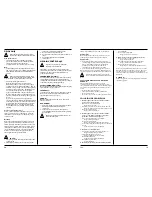
OPERATION
Before setting up, repair or maintenance of the
appliance you must always turn off the operating
switch and pull out the mains plug!
Before initial operation
-
Check if the rated voltage and rated frequency of the
mains supply correspond to the details of the type
plate.
-
Place the workbench on a stable and even base.
Operation
-
To adjust the planing depth, turn the control knob
(Fig. 1, A) in a clockwise direction. On the control
knob there is a pointer (Fig. 1, A) which shows the
planing depth in mm. Turn the control knob until the
desired planing depth is shown.
Never alter the planing depth during an operating
cycle, otherwise this will result in an uneven
surface. To prevent operating errors turn the control knob
back to “0” when planing is completed.
-
Secure the work piece with clamps or similar.
-
Place the front sole on the edge of the work piece in
such a way that the planing tool does not yet touch
the work piece. The work piece must be level.
-
Now insert the mains plug into the socket. To
switch on, first slide the release button (Fig.1, E)
backwards, keep it pressed backwards while you
press the operating switch (Fig.1, D). The planer
is now switched on and you can let go of the
release button.
-
Always hold the planer with both hands on the
handles, so as to gain the best possible control
over your planing operations. Besides you do not
risk becoming in touch with the moving parts.
-
When the machine has reached full speed it can be
pushed to the front over the work piece. At the
beginning of the planing operation, put some
pressure on the front and at the end of the operation,
on the rear of the appliance. This results in the
appliance remaining flat on the work piece and
prevents the corners from getting rounded off.
-
To obtain a level and smooth surface use a greater
planing depth when rough planing and a lesser planing
depth when planing a layer. Hold the electric tool
straight during the operation, otherwise you will
obtain an uneven surface. After the operation switch
off the electric tool and remove the mains plug.
Bevelling edges
The V-groove in the planer shoe allows easy beveling
of workpiece edges. Place the planer with the V-
groove (K) onto the edge of the workpiece and guide
along the edge.
Rebating
The rebating depth stop can be used by planing for
example a window- or doorpost. Loosen the locking
nut and adjust the required rebating depth with the
scale (Fig.2, H).
Carry out the the planing procedure several times
(guide the planer with sideward supporting pressure),
until the required rebating depth is reached. The
maximum rebating depth is 18 mm.
WARNING!
1. Take care that your hand never comes in contact
with the work piece during the operation.
2. Only use the electric plane on the upper side of the
work piece, never from below or from the side.
3. Store the appliance only after it has come to a
complete standstill.
-
Use a suction device to suck off wood shavings or
dust. For this use the connecting pipe (Fig. 2, L
accessories) and connect a suction pipe to it.
-
Use a holding device to work on small work pieces.
CARE AND MAINTENANCE
Before undertaking any care or maintenance
always remove the mains plug from the socket.
The planing tool becomes worn after a period of
operation. If you use a blunt or damaged planing tool
operational efficiency is reduced and the electric motor
might become overloaded. Check the planing tool
regularly with regard to wear or damage. Depending on
its condition, the planing tool will have to be replaced.
REMOVAL OF PLANE BLADE (FIG. 3)
Use the enclosed open-jawed spanner (Accessories).
First unscrew the three clamping screws (6) with the
open-jawed spanner and remove the plane blade (3), the
plane blade holder (2) and the plane blade support (4)
from the holding shaft (1).
INSTALLATION OF PLANE BLADE (FIG. 3)
Take the new plane blade (3) and position it between the
plane blade support (4) and the plane blade holder (2).
Now turn the clamping screws (6) as far as possible into
the plane blade support.
But not so far that the plane blade and the plane blade
holder become detached again from the plane blade
support. Afterwards put the plane blade, plane blade
holder and plane blade support together into the holding
shaft. The plane blade support, plane blade and plane
blade holder will now be fastened together in the holding
shaft by releasing the clamping screws with the open-
jawed spanner and thus the plane blade, plane blade
support and plane blade holder are clamped in position.
ATTENTION:
Unscrew clamping screws as fas as possible so that a
sufficient attachment is ensured.
WARNING!
1. When installing and removing the plane blade, care
has to be taken that all parts (plane blade, plane blade
holder, plane blade support and holding shaft) are
clean. Dirt or possible existing layers of dirt have to
be removed.
2. The Allen screws (5) are secured with an adhesive.
4
Ferm
Ferm
65





































